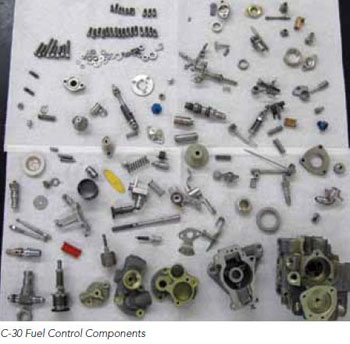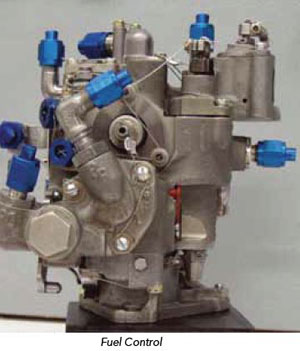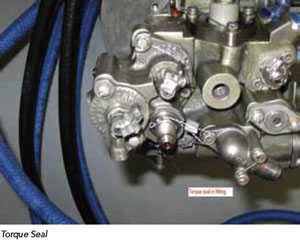
Don’t Be “Fuelish” What’s In Your System?

Going back in time, someone somewhere said, "kids and bank accounts are alike — you only get out of them what you put into them.” The same can be said for the fuel system on your helicopter. Proper care, maintenance and understanding should provide the performance and reliability required for today’s operations. There are different types of technologies from carburetors to digital systems, all with more parts than you care to imagine.

Maintenance
Following the recommended maintenance schedule is a must. Use quality filters and additives to reduce microbial growth your system. There have been problems where growth was so predominant that it has caused internal filters to implode and basically shut fuel off in flight. If you suspect that you are having this problem, it would be beneficial to adjust your maintenance intervals to advert any failure. We have seen problems from improper installation and removal procedures. Problems include stripped fittings, broken carbon seals, screws, etc. Take your time.

External Forces
Some systems are very sensitive, and this can lead to problems. Some problems originate from high vibration levels that engines cause if not properly detected. I call them shakers. They can literally shake a system apart internally. Other problems can come from starter generators that have not been properly balanced, bleed valves and water. Yes, I said water. Water can be inducted into the air side of the system during daily washes. Make sure you follow you maintenance manual here.

Knowledge
Know your aircraft fuel system and how all of its components work together. Know how to adjust it properly to compensate for start and acceleration problems. Ask your vendor when you have questions. Most issues can be resolved over the phone. I have had times when I could not answer the questions, but I found the answer from the manuals, engineers or the factory. And you know what? I learned and the fellow that asked the question learned. We both gained something. There are no dumb questions.
Cleanliness
Store spares in a clean place. Have them bagged if possible and make sure to have the correct cap plugs to prevent contamination. Many problems occur from mishandling or improper storage. I have seen a fuel control come back for “inop.” It had a dirt dobbler nest in the PC fittings because there was no cap. There was no way it was going to work. After further investigation it was determined the unit had been stored in a line shed. Red cap plugs can be your friend and your enemy. I have seen some of them get punched out into the fitting and go unnoticed until installation. We prefer to use metal cap plugs on the fuel fittings and red plastic on air fittings.

Wrapping it up
Safety first! Check all lines and never cut corners. I always look at the end product. Where it is going or who is it going to affect? It’s never worth saving a few dollars when you have lives on the line and people trust that you did the best that you can do. My motto is, “When in doubt, change it out.”
 Chris Hebert has spent 30 years in fuel system maintenance and overhaul. His knowledge and perceptions come from end-user operators maintaining some of the largest fleets in the world. He is the accountable manager for Helicopter Accessory Service South, and says he cooks a mean gumbo.
Chris Hebert has spent 30 years in fuel system maintenance and overhaul. His knowledge and perceptions come from end-user operators maintaining some of the largest fleets in the world. He is the accountable manager for Helicopter Accessory Service South, and says he cooks a mean gumbo.
